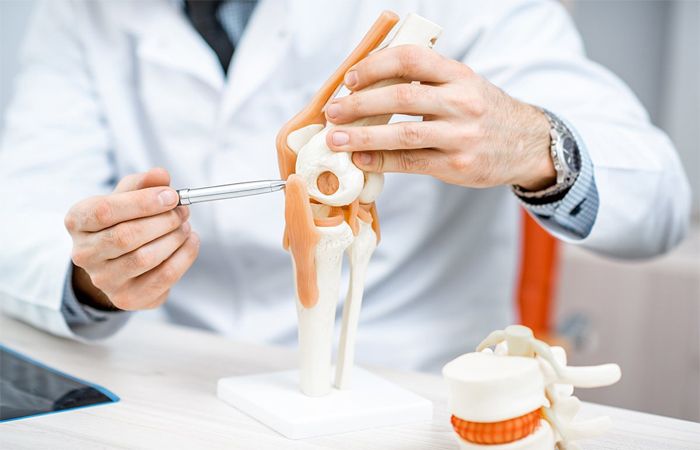What is Orthopedics? Well, it is the study of the musculoskeletal system of the body. This branch of medicine deals with the treatment of orthopedic ailments that plague human beings. Doctors conduct an extensive examination of the patient before suggesting orthopedic surgery.
Different Types of Orthopedic Implants
Orthopedic implants are used by orthopedic surgeons to correct deformities or traumatic fractures. There is a wide range of orthopedic plates and screws used for surgically treating the patients’ skeletal ailments.
Orthopedic surgeons have to consider the patient’s condition before presenting the patient with a surgical solution for the orthopedic problems. Many people are quite intimidated by orthopedic surgery. Orthopedic surgery is conducted with implants like surgical plates and screws to join a broken bone or stabilize a fracture site. The orthopedic implants are surgically grafted with the skeleton to ensure that the patient can retain the joint’s full movability.
Orthopedic surgeries can provide people with improve quality of life
Orthopedic surgeries are conducted to improve the quality of life. Chronic pain or restricted movement are well-known symptoms that are viewed in patients suffering from orthopedic problems. The surgical plates and screws that are used as orthopedic implants are discussed below:
Orthopedic Screws: Orthopedic plates and screws surgically implanted in the human body are done to secure damaged areas in the skeletal system like a torn labrum. The screws used by orthopedic surgeons look similar to the screws available in hardware stores. The flat screws are used to repair bone fractures. There are also Philips head screws that help in restoring stability to the damaged skeletal structure.
The screws are drilled inside the body in the affected area to ensure that the bone structure is not compromised. The screws are placed inside the bone structure to keep the bones from disintegrating to maintain optimum movement. The screws are driven into the skeleton and are left there permanently. If the screws become loose for some reason, then the screws are tightened, or new screws are used. But usually, surgically driven screws in the skeleton are not removed because these screws help keep the bones in place.
Prosthetic implants: In some cases, extensive damage to the skeletal system requires orthopedic surgeons to remove specific joints or bones from the body. In a few cases, bones can be shattered in accidents that require complete removal of the bone from the body. Traumatic injuries often require treatment with prosthetic implants.
Apart from accidents, birth-related skeletal problems also require the use of prostheses. Knee and hip replacement surgery require the use of prostheses. The patient who undergoes prosthetic surgery can move freely and lead a pain-free life. The recuperation time is relatively short in the case of prosthetic surgery. In some cases, instead of replacing the entire bone, the prosthetic implant is fused with healthy bones, which act as a replacement for diseased bones.
Surgical Plates: Surgical plates are the most common type of orthopedic implant used to protect damaged bones or replace broken bones. The skeletal structure’s stability depends on the reconstruction’s appropriateness for treating fractures with suitable surgical plates. There is a wide range of surgical plates that are used for orthopedic surgery. The well-known orthopedic plates are enlisted below:
Buttress: Fractures in the long bones of the human body, especially the knee and the ankle region, require strong plates that can hold the bone structure for ensuring proper repair. Such sites in the body experience a considerable amount of compression. These plates are sharped in the form of T or L.
More About it
Depending on the site of the body, these contoured plates are suitable for maintaining normal body movement.
Compression plates: As the name suggests, these plates are inserted to create pressure for fusing bone fragments so that the bone gets healed. High compression plates are suitable for holding together the bone fragments until they fuse naturally into a whole structure again.
Bridge plates: These plates are used to align the bones and stabilize the entire area to prevent further damage. Bone injuries that require healing are facilitated by bridging plates. These plates help preserve the blood supply to a fractured site, and so secondary healing is aided by these plates.
Tension plates: These are not technically plates but wires wrapped around an affected area so that it gets the opportunity to heal correctly.
Neutralization plates: These types of plates are used for spreading the load evenly. The screws and devices that are placed to stabilize the skeleton are held together by the neutralization plates. It helps the fractured site remains undisturbed.
Related Blog:- PRP Hair Treatment- Best Solution For Hair Fall
With the correct surgical implant, it is possible to treat patients effectively for orthopedic problems. These implants stay inside the body and strengthen the bones and prevent them from disintegrating. Hence, these are a few orthopedic implants that people should be aware of, which will provide them with better and improve health.

